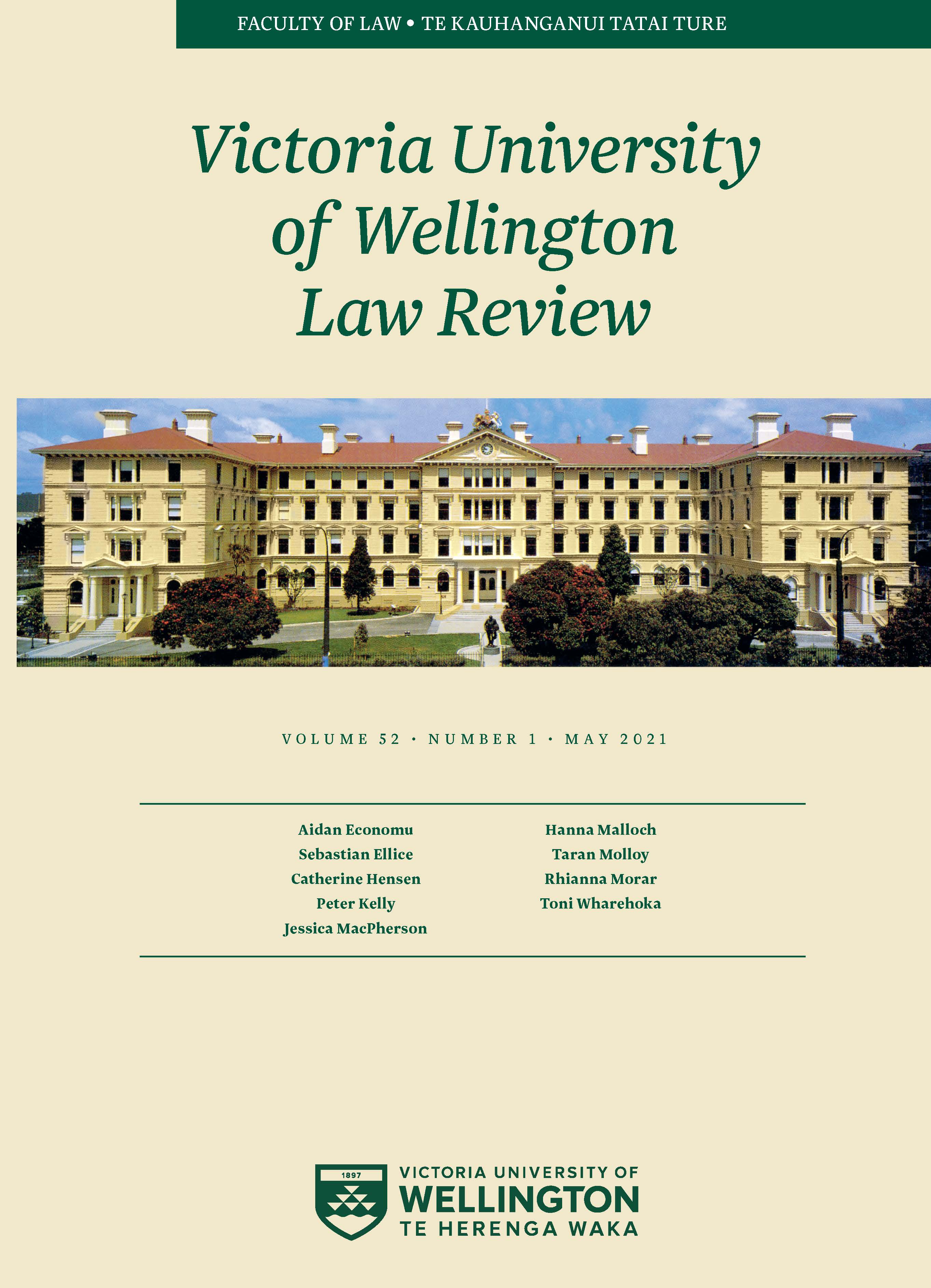Kia Whakatōmuri Haere Whakamua: Implementing Tikanga Māori as the Jurisdictional Framework for Overlapping Claims Disputes
DOI:
https://doi.org/10.26686/vuwlr.v52i1.6850Abstract
This article addresses the misconception that overlapping rights to land are always in tension with one another. In this article, I apply a tikanga-based analysis to the policy on overlapping rights that is used in the settlement of historical Treaty of Waitangi claims. I argue that the supremacy of colonial law within the State legal system continues to suppress indigenous relationality and limit the mechanisms for reciprocity. This article problematises the following claims made about overlapping claims disputes. First, that overlapping rights are too complex for judicial resolution. This article examines the ways in which overlapping rights are capable of co-existing to preserve relationships between different iwi and hapū. Second, that tikanga is a contestable system of law and should not be regarded as a question of law or as a jurisdictional framework for resolving such disputes. This article critically analyses the extent to which these claims are based on the supremacy of colonial law within the State legal system by considering the application of tikanga in the courts and alternative dispute resolution processes. I argue that tikanga Māori is the only applicable framework whereby differences can be mediated in a way that preserves the relationships between the parties and provides redress mechanisms for continuing reciprocity. This article concludes that the State legal system at present continues to delegitimise indigenous relationality in ways that amalgamate rights into a colonial recognition framework, which fails to recognise tikanga Māori as an equal system of law in Aotearoa New Zealand.
Downloads
Downloads
Published
Versions
- 2021-06-29 (2)
- 2021-06-27 (1)
How to Cite
Issue
Section
License
Authors retain copyright in their work published in the Victoria University of Wellington Law Review.


